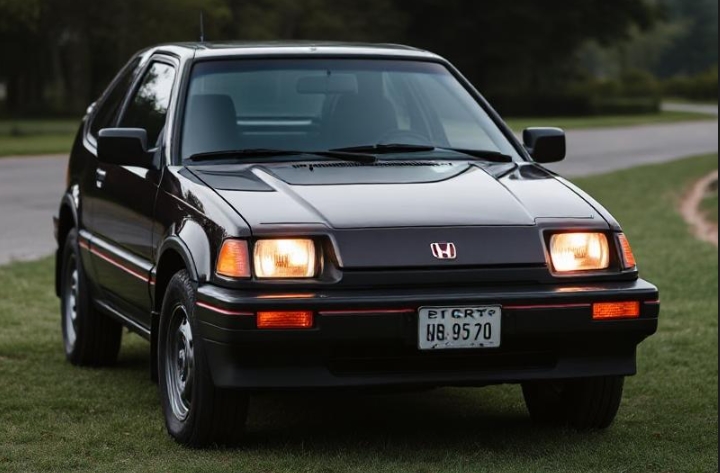The Enduring Heart: A History of the Alfa Romeo GTV
In the grand pantheon of automotive acronyms, few stir the soul quite like GTV. For the dedicated Alfisti, these three letters are not merely a model designation; they are a promise. Standing for Gran Turismo Veloce (Fast Grand Touring), the GTV badge has graced some of the most beautiful, charismatic, and driver-focused cars to ever emerge from Milan. It represents a bloodline of coupés that prioritized style, engine character, and a sublime connection between the driver, the machine, and the road. Spanning four decades and three distinct generations, the evolution of the Alfa Romeo GTV is a fascinating journey through changing automotive philosophies, technologies, and designs, all while striving to maintain the brand’s quintessential cuore sportivo (sporting heart).
The Genesis: Giulia Sprint GT Veloce (105/115 Series, 1965-1977)
The story of the GTV begins with one of the most celebrated automotive designs of the 20th century. In 1963, Alfa Romeo introduced the Giulia Sprint GT, a stunning coupé based on the Giulia saloon’s chassis. Penned by a young Giorgetto Giugiaro at Bertone, its perfectly proportioned, elegant lines were an instant classic. However, the true GTV legend was born in 1965 with the arrival of the Giulia Sprint GT Veloce.
This wasn’t just a trim level; it was a significant upgrade. The Veloce took the standard 1.6-litre, all-aluminium, twin-cam four-cylinder engine and enhanced it with higher-compression pistons, larger valves, and a pair of twin-choke Weber carburettors, boosting power from 105 to a spirited 108 bhp. While the numbers seem modest today, in a lightweight chassis of around 1,000 kg with a sophisticated five-speed manual gearbox and disc brakes on all four wheels, the GTV was a revelation. It was nimble, communicative, and its engine sang a glorious mechanical song all the way to its redline.
Early models (1965-1967) are affectionately known as the “Scalino” or “step-front” due to a distinctive bonnet that sat about a centimetre lower than the leading edge of the front valance, a quirk of a last-minute design change. This feature has made them the most sought-after of the series.
The GTV nameplate itself was fluid during this era, with the evolution of the model taking precedence:
- 1750 GTV (1967-1972): As part of a range-wide update, the GTV received a significant makeover. The “step-front” was smoothed out for a cleaner look, the interior was revised with a new dashboard, and most importantly, a larger 1779 cc engine was fitted. Now producing around 120 bhp, the 1750 GTV (the ‘Sprint’ name was dropped) offered more torque and a more refined, long-legged character befitting its Gran Turismo credentials. It is often considered the sweet spot of the entire 105 series for its balance of power, handling, and classic style.
- 2000 GTV (1971-1977): The final evolution was the 2000 GTV. The engine was bored and stroked to 1962 cc, delivering a potent 130 bhp. This model was distinguished by a new grille with horizontal chrome bars, larger rear light clusters, and an upgraded interior. The 2000 GTV was the fastest and most powerful of the series, a fitting swansong for a design that defined the affordable, stylish European sports coupé for a generation. A limited-slip differential became standard, further enhancing its already superb road-holding.
Throughout this period, the 105 Series coupé was a dominant force in touring car racing, cementing its legendary status. Its combination of Giugiaro’s timeless design and Alfa’s advanced engineering created a machine that was more than a car; it was an icon.
.
THIS could come in handy for your auto garage (and everywhere else!):

.
A Bold New Angle: The Alfetta GTV & GTV6 (Type 116, 1974-1987)
If the 105 Series was a product of the graceful 1960s, its successor was pure, angular 1970s futurism. Unveiled in 1974, the Alfetta GT was another masterpiece from Giorgetto Giugiaro, but this time his vision was a sharp, aggressive wedge. Based on the Alfetta saloon, it carried over a revolutionary piece of engineering that would define its character: the transaxle.
By placing the clutch and five-speed gearbox at the rear, combined with a De Dion tube rear suspension and inboard rear brakes (to reduce unsprung weight), the Alfetta GTV achieved near-perfect 50/50 weight distribution. This complex layout endowed it with phenomenal balance and handling, making it one of the most rewarding driver’s cars of its era.
The model lineup evolved significantly through its long production run:
- Alfetta GT (1974-1976): Launched initially with the 1.8-litre (1779 cc) twin-cam from the previous generation’s Berlina, producing 122 bhp.
- Alfetta GT 1.6 & GTV 2000 (1976-1980): The range was expanded. A 1.6-litre, 109 bhp version was introduced as the entry-level model, while the GTV designation returned with the Alfetta GTV 2000. This model used a 2.0-litre (1962 cc) twin-cam engine producing 128 bhp. Later, a “Lusso” (GTV 2000L) model offered a more luxurious interior.
The defining moment for this generation came in 1980 with a major facelift and the introduction of a new engine. The chrome bumpers were replaced with modern plastic integrated units, and the interior was updated. But the real news was under the bonnet. To compete in a new decade, Alfa Romeo fitted its magnificent new 2.5-litre V6 engine, creating the legendary GTV6.
- GTV6 2.5 (1980-1987): The Giuseppe Busso-designed V6 was a work of art. With its sonorous, operatic exhaust note and smooth power delivery (158 bhp), it transformed the car. The GTV6 was instantly recognizable by the prominent power bulge on its bonnet, required to clear the V6’s intake system. It was a sublime grand tourer and a formidable performance car, winning the European Touring Car Championship for an incredible four consecutive years (1982-1985). The GTV6 is arguably the most beloved model of this generation, a perfect marriage of a sophisticated chassis and a world-class engine.
Special editions included the GTV6 Balocco and the rare, South African-built GTV6 3.0, a homologation special that is highly prized by collectors today. The Alfetta GTV proved that Alfa could evolve its design language dramatically while doubling down on the advanced engineering that defined its driving experience.
Rebirth for a New Era: The GTV & Spider (Type 916, 1995-2004)
After the Alfetta GTV ceased production in 1987, the GTV name lay dormant. It was revived in spectacular fashion in 1993 at the Geneva Motor Show. The all-new GTV (Type 916), and its convertible sibling the Spider, was a shocking and audacious piece of design from Enrico Fumia at Pininfarina.
Based on a front-wheel-drive platform derived from the Fiat Group’s “Tipo” architecture, it was a radical departure from its rear-wheel-drive predecessors. This shift was controversial among purists, but Alfa Romeo’s engineers worked magic. They developed a sophisticated multi-link rear suspension that induced passive rear-wheel steering, giving the GTV incredibly sharp, darty turn-in and minimizing the understeer typically associated with powerful FWD cars.
The design was its most talked-about feature. A dramatic, rising wedge profile, a clamshell bonnet with cutouts for the quad round headlights, and a high, Kamm-style tail created a shape that was utterly unique and still looks futuristic today.
The 916 GTV had a decade-long production life, marked by three distinct phases:
- Phase 1 (1995-1998): The launch models featured a black plastic interior. Engine choices were the heart of the car’s appeal:
- 2.0-litre 16V Twin Spark: A rev-happy four-cylinder producing 150 bhp, lauded for its eagerness and classic Alfa sound.
- 2.0 V6 TB: A 2.0-litre turbocharged V6, primarily for the Italian market due to taxation, produced a punchy 200 bhp.
- 3.0 V6 12V: The glorious Busso V6 returned, now with 12 valves and 192 bhp, providing effortless grand touring pace and a magnificent soundtrack.
- Phase 2 (1998-2003): A mild update brought a revised chrome grille frame and a new centre console finished in silver-grey plastic, lifting the interior ambiance. The engine lineup was significantly revised:
- 1.8 16V Twin Spark: A new entry-level 144 bhp engine was introduced.
- 2.0 16V Twin Spark: Power was increased to 155 bhp.
- 3.0 V6 24V: The V6 was upgraded to a 24-valve head, boosting power to a formidable 220 bhp. Mated to a six-speed gearbox, this became the definitive 916 GTV for many, offering stunning performance. The 2.0 V6 Turbo was largely phased out. Trim levels were often designated as Lusso, which typically added leather upholstery and air conditioning.
- Phase 3 (2003-2004): The final iteration received a major frontal restyle, incorporating the new, deeper Alfa Romeo shield grille from the 147, bringing it in line with the contemporary family look. The engine range was again updated:
- 2.0 JTS: The Twin Spark was replaced by a new 2.0-litre direct-injection “Jet Thrust Stoichiometric” engine with 165 bhp.
- 3.2 V6 24V: The ultimate 916 GTV arrived. It used the 3.2-litre version of the Busso V6 from the 147 and 156 GTA, producing 240 bhp. This was the fastest production Alfa Romeo of its time, a thrilling, torque-laden finale for both the GTV and the legendary Busso V6 engine itself.
The 916 GTV proved that the spirit of Gran Turismo Veloce could thrive even with a front-wheel-drive layout. It was a car of immense character, defined by its avant-garde styling and a superb range of soulful engines.
The Legacy and the Future
Since the last 916 GTV rolled off the line in 2004, the badge has remained dormant. The Alfa Romeo Brera which followed was a spiritual successor, but never wore the hallowed GTV name. In 2018, a new GTV was announced as part of a future product plan—a Giulia-based coupé with over 600 horsepower—only to be canceled a year later, much to the dismay of the faithful.
The evolution of the Alfa Romeo GTV traces a path from post-war elegance to 70s modernism and 90s futurism. Yet, despite their vast differences, all three generations are bound by a common thread: they were never just about getting from A to B. They were about the drive. They were about the sound, the style, and the feeling you got from gripping the steering wheel. Each GTV was a statement, a car bought with the heart, embodying the passion, performance, and undeniable Italian soul that is Alfa Romeo. The world of motoring waits, hoping one day to hear that operatic engine note announce the return of the GTV.







